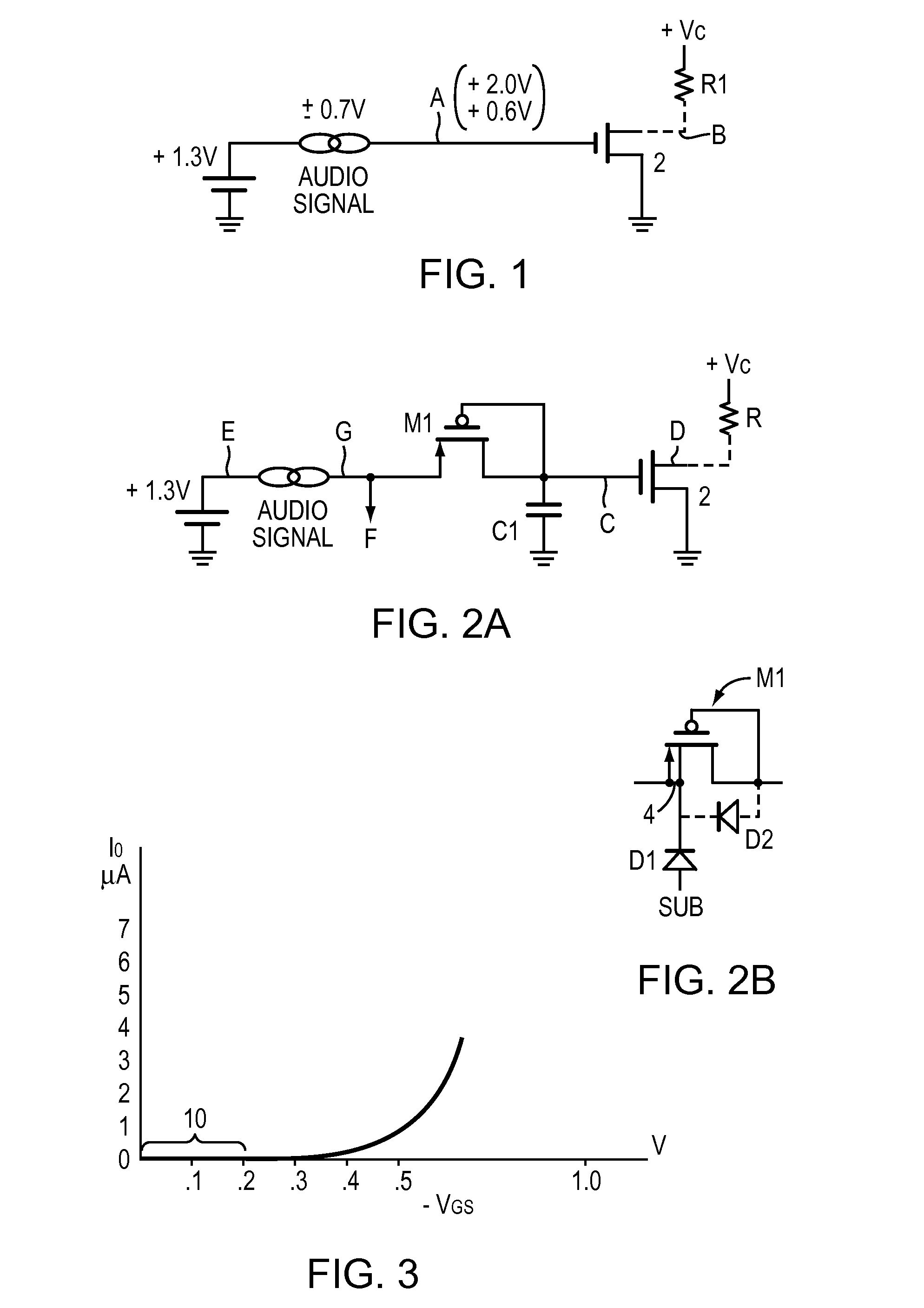Audio filter using a diode connected mosfet
a diode connected, filter technology, applied in pulse manipulation, frequency selective two-port network, pulse technique, etc., can solve the problem of only present audio signal, and achieve the effect of attenuating any audio signal and high value resistan
- Summary
- Abstract
- Description
- Claims
- Application Information
AI Technical Summary
Benefits of technology
Problems solved by technology
Method used
Image
Examples
Embodiment Construction
[0018]FIG. 2A adds a series P-type CMOS, M1, and a bypass capacitor C1 to the circuit of FIG. 1. The source of M1 is at a typical DC +1.3V level and a possible interfering audio signal is shown. The design provides that M1 and C1 attenuates the audio signal so that the N-type CMOS 2 does not turn off during the negative peak of the audio signal, as it did in FIG. 1 discussed above.
[0019]Referring to FIG. 2A, if the gate input C is at 0V, M1 is connected as a diode, as point E rises to the +1.3 volt level, current will flow through the diode (M1) and charge C1. As C1 charges, the voltage across M1 will decrease until it is in the sub-threshold range. At this point, as shown in FIG. 3, some microAmp current will continue to charge C1 until the voltage across M1 is in the 0.1-0.2 V range. At a Vgs of 0.2V, the equivalent resistance of M1 is a very high value (in the gigaOhms), and point C might remain at about 1.0 to 1.1V. The CMOS 2 will be on, assuming its threshold is about 0.7V, an...
PUM
 Login to View More
Login to View More Abstract
Description
Claims
Application Information
 Login to View More
Login to View More - R&D
- Intellectual Property
- Life Sciences
- Materials
- Tech Scout
- Unparalleled Data Quality
- Higher Quality Content
- 60% Fewer Hallucinations
Browse by: Latest US Patents, China's latest patents, Technical Efficacy Thesaurus, Application Domain, Technology Topic, Popular Technical Reports.
© 2025 PatSnap. All rights reserved.Legal|Privacy policy|Modern Slavery Act Transparency Statement|Sitemap|About US| Contact US: help@patsnap.com


